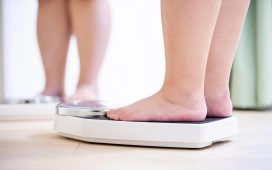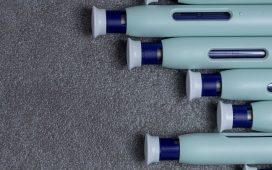The American Urological Association’s 2018 Annual Meeting
The annual meeting of the American Urological Association was held from May 18 to 21 in San Francisco and attracted more than 12,000 participants from around the world, including clinicians, academicians, allied health professionals, and others interested in urology. The conference highlighted recent advances in the prevention, detection, and treatment of urologic conditions, with presentations focusing on the advancement of urologic patient care.
In one study, Will Brubaker, M.D., of Stanford University in California, and colleagues performed a comprehensive analysis of 273 water variables and ZIP code-level kidney stone prevalence, utilizing an environment-wide association study method. The investigators aimed to identify constituents within the California municipal water supply that were associated with clinically significant urinary stone disease.
“The etiology of urinary stone disease is multi-factorial. We have known for decades that environmental factors influence urinary stone disease, including geographic location, temperature, and precipitation,” Brubaker said. “To date, there are few studies that have looked at the constituents in drinking water as potential factors that can influence urinary stone development. Most studies focus on a limited number of variables such as water hardness, calcium, and magnesium.”
Data for patients with urinary stones was obtained from the California Office of Statewide Health Planning and Development dataset from 2010 to 2012. All emergency department encounters with a kidney stone diagnosis and all kidney stone surgeries were combined by ZIP code and normalized by ZIP code population. Then, each ZIP code was given a “stone score,” with higher scores correlating with higher stone burden.
“We identified four water constituents that were associated with being in the top quartile of ZIP codes with significant stone disease, and 20 water constituents inversely associated with being in the top quartile of ZIP codes with significant stone disease,” Brubaker said. “Some of the constituents that we found to be inversely associated, including calcium, magnesium, water hardness, and potassium, have been shown in in-vitro and animal studies to be protective against kidney stone development in certain circumstances.”
According to the researchers, zinc was also found to be associated with the top quartile of ZIP codes by stone score.
“While these associations are compelling, they cannot be taken as evidence of a causal relationship,” Brubaker cautioned. “Our results provide novel environmental exposures that can be studied further to potentially discover a causal relationship or no relationship at all.”
Abstract No. MP13-02
In another study, Joseph R. Wagner, M.D., of Hartford Hospital in Connecticut, and colleagues found that differences exist in favorable prognostic outcomes for prostate cancer obtained from the genomic tests Oncotype DX, Prolaris, and Decipher.
“As urologic oncologists, we have known for a long time that prostate-specific antigen, Gleason score, and digital rectal exam do not tell the whole story. The hope is that molecular testing can provide further information to help patients make difficult treatment decisions. I think the most important thing to take away from this study is that, overall, the tests do seem to loosely correlate with each other. However, there are differences; one test might indicate treatment while another indicates active surveillance would be appropriate,” Wagner said. “I think it is very important that we do not conclude from this very limited, small study that any particular genomic test is superior to another. However, I do believe that we need additional tools to better stratify our patients’ clinical risk and help them with their treatment decisions. Currently, genomics is beginning to fill this void.”
Abstract No. PD06-09
Alaa Abdalla El Sayed, M.D., of Al-Ansar Hospital in Madinah, Saudi Arabia, and colleagues found that adding 5 mg of tadalafil daily to antibiotic therapy significantly improved symptoms seen in men with chronic prostatitis/pelvic pain.
“Chronic prostatitis can be a tough problem for clinicians to manage. These patients require multi-modal therapy due to the spectrum of symptoms seen in these patients. Patients may have urinary symptoms, erectile issues, or pain around the prostate, perineum, and other areas. Antibiotics are prescribed if there is bacterial infection, but beyond this, treatment is targeted to improve pain, discomfort, and inflammation,” said Jamin Brahmbhatt, M.D., of Orlando Health in Clermont, Fla., who moderated the presentation of this study at the conference. “Clinicians should consider adding tadalafil 5 mg daily to their management options in patients with chronic prostatitis/pelvic pain. This dose is already used for men with urinary symptoms and erectile dysfunction. Adding it on for men with prostatitis who have one or both of these symptoms can be of benefit.”
Abstract No. PD62-01
Alison Huang, M.D., of the University of California in San Francisco, and colleagues evaluated a specialized yoga program for middle-aged and older women with urinary incontinence. The average age of the women was 66 years (with a range of 55 to 83 years). All of the women experienced unwanted urine leakage on at least a daily basis, and the majority of women leaked urine three or more times a day at the beginning of the study.
One-half of the women were randomly assigned to take part in a three-month yoga program designed by a panel of expert yoga consultants, in which they attended group yoga classes twice a week and practiced yoga at home once a week. Over the course of this program, women learned to practice 15 standard yoga poses in ways that were likely to maximize the benefit to their incontinence. The other half of the women were randomly assigned to take part in a control (comparison) program that also included twice weekly group classes and once weekly home practice, but these women practiced non-specific muscle stretching and strengthening exercises rather than yoga.
“In spite of their age, the frequency of their incontinence, and their lack of experience with yoga, these women were able to learn to practice yoga effectively and safely through this three-month yoga program. And by the end of the three months, women in the yoga group reported a greater than 75 percent decrease in the frequency of their incontinence, a pretty dramatic change,” Huang said. “We think this study provides promising early evidence that older women suffering from urinary incontinence can be safely taught to practice yoga to improve their urine leakage. Incontinent women who participate in a yoga program like this are likely to see a major reduction in their incontinence.”
Abstract No. PD32-01
AUA: Most Women Report Dysfunctional Toileting Behaviors
MONDAY, May 21, 2018 (HealthDay News) — Many women report dysfunctional toileting behaviors, which are associated with lower urinary tract symptoms, according to a study presented at the annual meeting of the American Urological Association, held from May 18 to 21 in San Francisco.
AUA: Many Have Unused Opioids After Urologic Procedures
FRIDAY, May 18, 2018 (HealthDay News) — Patients undergoing urological procedures use just over half of their initial prescription of opioids, on average, according to a study presented at the annual meeting of the American Urological Association, held from May 18 to 21 in San Francisco.
Copyright © 2018 HealthDay. All rights reserved.







